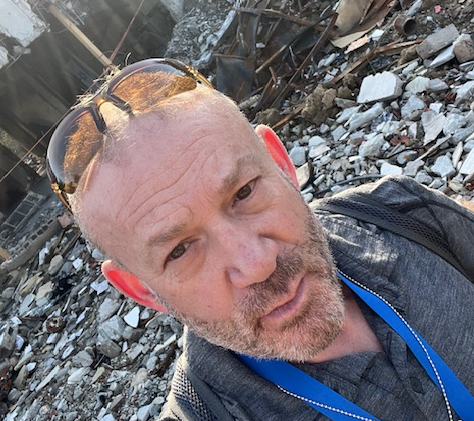
Can You Teach a New Robot Old Tricks?
February 17, 2011
Uncategorized
When Amir Shapiro arrived in Philadelphia last week, he came with a posse of robots. They walked, crawled, spun, wiggled, twisted and rolled, just like the real animals they are modeled after in nature.
Addressing large audiences throughout the Delaware Valley region during his two-day stay in the area, Shapiro — director of the robotics laboratory at Ben-Gurion University of the Negev in Beersheva, Israel — brought with him just a small sample of the many robots created in his lab.
His goal: to explain the real-world application of his traveling companions. He brought them to life with the flick of a switch, demonstrating the unique functions and features of each.
“Do they look like toys?” the affable, youthful-looking scientist asked the crowd at Congregation Tifereth Israel of Lower Bucks County in Bensalem, as he smiled with an obvious delight that spread throughout the younger audience members. Dozens of youngsters and teens gravitated toward the robots, anxious for a closer look, though they were a bit hesitant when the scientist asked for volunteers.
Unlike the toys they resemble — toys controlled through battery power or remote control — Shapiro’s robots do all of that and more.
The robots are invaluable to the Israeli military and civilian populations, as well as elsewhere throughout the world, he said. For example, his robots can be employed during search-and-rescue missions in foxholes and tunnels, search for bodies hidden under collapsed buildings, and detect bombs and drugs aboard ships.
One of his challenges, said the 39-year-old father of five, is to actually get his robots to veer off-course.
“My expertise is nonlinear control,” explained the native of Haifa.”You see the robots walking, crawling, climbing and grasping to explore an environment and search for targets. I have to teach them how to search; I write the algorithm to find the path to the target.”
Shapiro earned three engineering degrees at the Technion-Israel Institute of Technology in Haifa, and then pursued his post-doctorate training at the bio-robotics lab at Carnegie Melon University in Pittsburgh. Since then, he has visited America many times, educating and entertaining audiences with his robots.
While in America, he has also met with engineers and health practitioners interested in the cutting-edge research that is often the product of his work in Israel.
During his recent trip to the area, Shapiro brought his robotics demonstrations to several Jewish venues. In addition to Congregation Tifereth Israel, he made presentations at Temple Sinai in Dresher, Kohelet Yeshiva High School in Merion Station and the America-Israel Chamber of Commerce.
More than 100 people were not deterred by Tuesday-night’s freezing temperatures or gusting winds, and arrived in Bensalem for Shapiro’s final presentation on his Delaware Valley circuit.
“I have a big team,” including nine graduate and 30 undergraduate students, he told those who were gathered at Tifereth Israel on Feb. 8.
“There are many kinds of tasks we develop the robots to do. The robots we make do jobs we can’t or don’t want to do. The jobs might be boring, complicated or dangerous, so we get the robots to do these things for us,” explained Shapiro.
He demonstrated, for example, the work of a particular robot used during search-and-rescue missions. Mimicking animal locomotion, what looked like a black velour snake crawled, turned, changed direction and slithered under the direction of Shapiro. He then set it on a course of movements that included it rolling in a wavelike motion, mimicking traveling through a foxhole or a tunnel.
Shapiro was also in town to help raise money for the university, with the hopes that such funding will enable him to expand his robotics lab, provide funding to hire additional researchers, equip labs and fund collaborative research with other universities that will draw schools throughout the world to Ben-Gurion University of the Negev.



